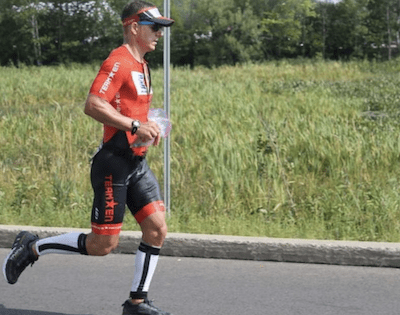In Part I we introduced you to our Five Keys of Triathlon Coaching and discussed one through four. To review, the Five Keys of Triathlon Coaching are:
Real World Volume
Maximize Return on Time Invested
Fitness = Ability to Perform More Work
Intensity = Most Flexible Tool to Manipulate Training Load
The Best Predictor of Performance is Pace/Watts at Functional/Lactate Threshold.
In this article we’ll discuss why pace/speed/watts at Functional or Lactate Threshold, not training volume, is the best predictor of performance at all race distances.
Let’s begin with a quick review of Key #3: Fitness as the Ability to Perform more Work. As we discussed, the functional expression of your fitness is the ability to pedal your bike, run or swim at given speed — to perform the physics of moving the mass of your body through space. In order to force your body to adapt, you need to make it perform more work. But let’s talk about what happens inside your body as you ask it to perform more work — to ride, run or swim faster.
Your body begins by recruiting slowtwitch muscle fibers. These fibers:
Are good at performing relatively low force contractions…but
They can go and go and go for a long time. They are fatigue resistant.
They recover quickly.
Primarily burn fat for fuel. At ~3600 calories per one pound of fat, even then leanest triathlete has a nearly endless fatty gas tank.
Muscles fibers only adapt when you recruit them and make them do more work than they are accustomed to. The more often you recruit your slowtwitch fibers, ie, the more exercise you do, the better they become at doing slowtwitch stuff: they adapt to produce more force, go longer, and become more fuel efficient. Remember that your body is lazy and will only adapt itself to meet the load you place upon it. The more stress you place on this system, the more it is forced to adapt.
As the workload increases (you go faster and faster) your body recruits a more and more slowtwitch fibers to chip in. At some work rate (speed), you begin to run out of slowtwitch fibers to recruit and your body begins to call in fast twitch fibers to do the work. Fast twitch fibers:
Perform high force contractions, but…
Tire easily and take a long time to recover. One and done, or need to rest a good bit before being put back to work again.
Burn glycogen for fuel. The well-trained, well-rested endurance athlete only has about 1800-2000 calories of glycogen stored in the muscles and in the liver, much more limited than our fat reserves.
Same adaptive jazz as above: the more often you recruit fast twitch fibers, ie, force them to work, the better they become at doing fast twitch stuff. Better still, some of them can begin to take on the characteristics of slow twitch fibers, increasing the number of fat-burning (unlimited energy source) fibers you have available to swim, bike, or run.
Produce lactate as a byproduct.
Which brings us to Lactate Threshold, a term you may have heard of. This is an exercise intensity at which lactate levels in the blood rise above a certain level, as more and more fast twitch fibers (produce lactate) are called upon to work. It’s called a “threshold,” because we can exercise for a long time at or just under this intensity. However, above this intensity, lactate levels increase, we rapidly fatigue and are eventually forced to slow down. At lactate threshold intensity we can say we have recruited most or all of our slowtwitch fibers, and a good bit of our fast twitch fibers, forcing them to adapt and become better at their respective roles. Finally, we can sit here for a long time, exposing our fibers to this work load and forcing them to adapt to meet it.
We summarize all of the above by saying that “Fitness is in the muscles.” That is, a workout is nothing more than an opportunity to recruit a high percentage of muscle fibers, forcing these fibers to adapt and become better at what they do. As they become better muscles, they can do more work, the expression of which is “I go faster.”
Let’s now talk about the real-world training implications of all of this:
Training Zones determined relative to Lactate Threshold (LT): Because Lactate Threshold is such a powerful place, we want to define our training intensities relative to LT. No big secret here, there are many systems for doing this, but hopefully our explanation above sheds more light on just why this is so powerful.
Zones 1 and 2 = Limited Adaptation: If all you do is exercise at Zone 1 and 2, you have entire squads of slowtwitch and fast twitch fibers that are never recruited, never forced to adapt. In other words, you’ll get very, very good at riding and running very slowly!
Zone 4 (Lactate Threshold) = Maximum exposure of all fibers to a training load forcing them to adapt. At Zone 4, ALL of my slowtwitch fibers are recruited and being forced to adapt, MANY of my fast twitch fibers are doing the same. This is a very efficient place to spend spend your training time at, because I get so many go-longer and go-faster adaptions. And not much time is required. For example, in our experience, as little as forty minutes of LT work per week spread across your cycling can dramatically increase your speed on the bike.
Fitness adaptions occur within a range of intensities: The either/or of Aerobic/Anaerobic exercise described by triathlon culture is simply not correct.
The summary of all of this is the Fifth Key of Triathlon Coaching: Pace/Power/Speed at Lactate Threshold is the Best Predictor of Performance.
That is, if we can improve your 5k, 10k, or half marathon time, we can make you a faster Half or full Ironman® runner once we then put some endurance and durability under those faster running legs. If we can improve the speed at which you can ride for an hour from 19mph to 22mph, that similar speed increase will be expressed at 56 and 112 miles, assuming we put some endurance under it. In other words, “a rising tide lifts all boats.” We target, test, and track the “tide” of our athletes, as we know from that experience that fast at short is fast at long, once we put “far” under that “fast.”
Join us next week for Part III, where we will contrast the ideas and experiences we have shared with you in this series with commonly held endurance training myths.




Leave a Reply